In the wild cat family, the lynx and the bobcat are two species often mistaken for one another due to their similar appearances. However, these two cats have distinct characteristics and adaptations that set them apart.
This article explores the differences and similarities between lynx and bobcats, examining their size, behaviors, habitats, and diets, and considers who would win a fight.
How to tell the difference between Lynx and Bobcat?
To tell the difference between a lynx and a bobcat, you can look for several key physical and behavioral characteristics.
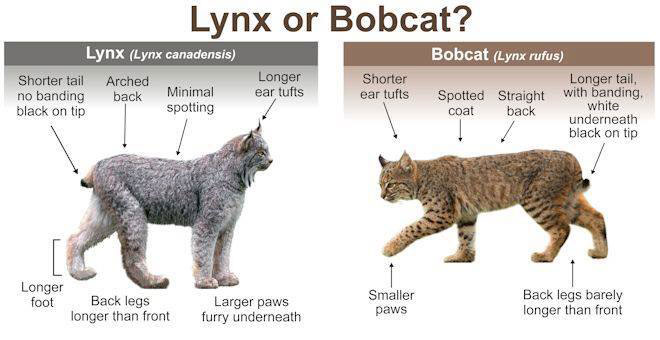
| Lynx | Bobcat | |
|---|---|---|
| Size | 26 to 30 pounds, up to 3 to 4 feet in length | 14 to 40 pounds, 2.5 to 3.5 feet in length |
| Legs and Feet | Long legs, large furry paws adapted for snow | Shorter legs, smaller paws for varied terrains |
| Fur Color and Patterns | Thicker, fluffier fur, usually gray with light spotting | Brown to reddish-brown fur with distinct spots and stripes |
| Tail | Short, stubby with a completely black tip | Slightly longer with more distinct banding and black tip |
Lynx vs Bobcat: Size
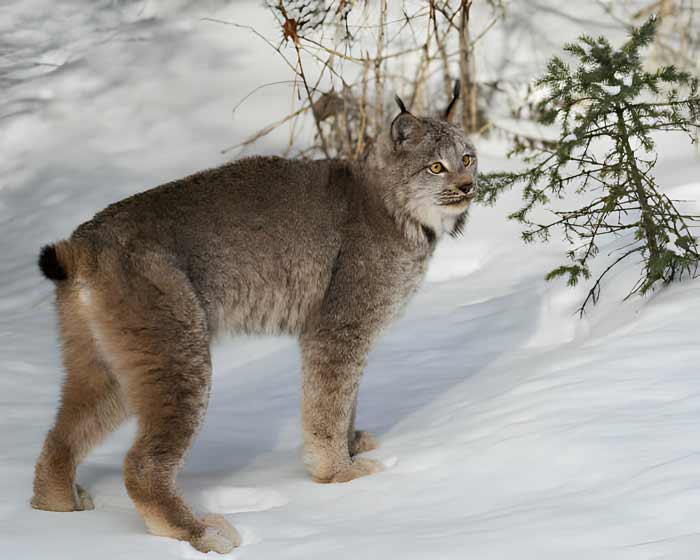
In terms of size, the lynx generally holds a notable advantage over the bobcat. Adult lynx can weigh between 26 to 30 pounds, and some individuals even exceed this range, reflecting their larger stature. Not only are they heavier, but lynx also tend to be longer.
They can measure from nose to tail up to 3 to 4 feet in length, contributing to their overall larger appearance. This size is complemented by their robust build, making them appear more formidable in the wild.

In contrast, bobcats, while they can vary in size, are generally smaller. They typically weigh between 14 to 40 pounds, but their body length usually ranges from 2.5 to 3.5 feet. Despite this size range, bobcats tend to have a more compact and muscular build.
This difference in size and length between the two species is a clear indicator of their distinct evolutionary adaptations and the different environmental challenges they face.
Lynx vs Bobcat: Tail
The tails of lynx and bobcats are one of the most distinguishing features between these two species.

Lynx have a short, stubby tail that typically ends in a completely black tip. This tail is not just a distinctive feature but also plays a role in their balance and agility in their snowy habitat.

Bobcats have a slightly longer tail, which is noticeable for its distinct banding and black tip. The length and patterning of the bobcat’s tail are adaptations for its more varied environmental settings.
Legs and Feet
The legs and feet of these two species are distinctively adapted to their respective environments.
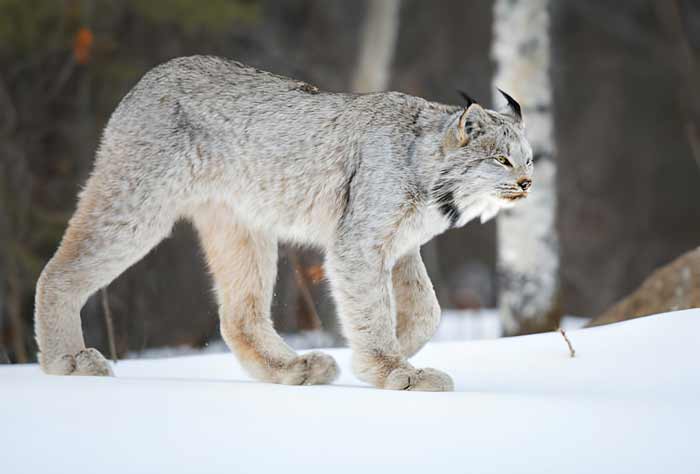
Lynx are equipped with long legs and notably large, furry paws. This unique adaptation is crucial for their survival in snowy habitats, as it allows them to tread softly and efficiently on deep snow, much like natural snowshoes.
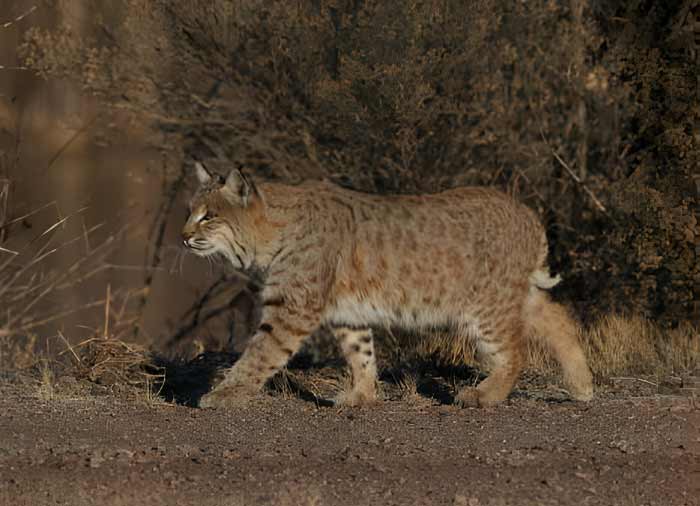
Bobcats, however, have shorter legs and smaller paws, which are more versatile for various terrains, ranging from dense forests to semi-arid regions. This difference in leg and foot structure highlights the distinct evolutionary paths these two species have taken.
Fur Color and Patterns
The fur of a lynx is typically thicker and fluffier, which is an essential adaptation for surviving in colder climates. The color of their fur usually ranges in shades of gray and is often lightly spotted, which helps them blend into the snowy and rocky environments.
Bobcats, in contrast, have a coat that can range from brown to reddish-brown, marked with more pronounced black spots and stripes. This pattern provides excellent camouflage in a variety of settings, from wooded areas to the underbrush.
Diet
Diet is another area where lynx and bobcats differ significantly. Lynx primarily prey on snowshoe hares, which constitutes a significant portion of their diet. However, they are also known to hunt other small mammals, birds, and occasionally venture to take down larger prey like deer.
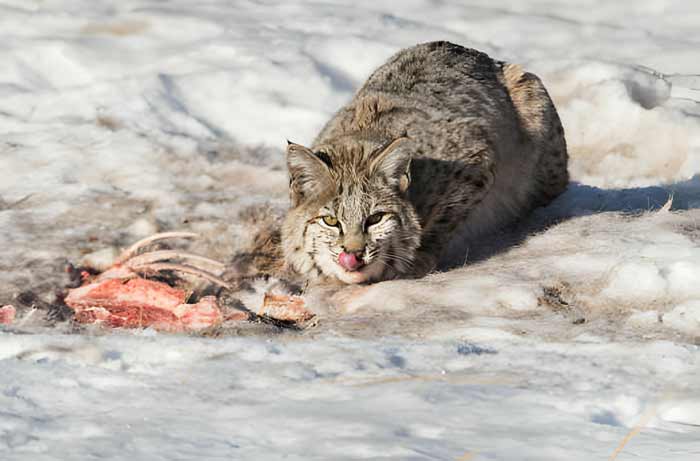
The bobcat’s diet is more varied, reflecting its adaptability to different environments. They feed on rabbits, birds, mice, squirrels, and are also known to hunt larger prey like deer, particularly when smaller prey is scarce.
Behavior
Behaviorally, lynx are elusive and tend to be less aggressive compared to bobcats. They are solitary creatures, and their interactions are mostly limited to the mating season or maternal care.
Bobcats, on the other hand, while also solitary, can exhibit more territorial and aggressive behavior. This is particularly evident in areas where their habitat overlaps with human settlements, where bobcats have shown adaptability and a certain boldness.
Habitat
The lynx is predominantly found in the cold, dense forests of the northern hemisphere, such as Canada and parts of the northern United States. Their physical adaptations are perfectly suited for life in snowy and icy terrains.

Bobcats have a much wider range and are found across North America. They are highly adaptable and can thrive in various habitats, including forests, swamps, desert lands, and even in suburban areas, showcasing their remarkable versatility.
Lynx vs Bobcat: Who Would Win?
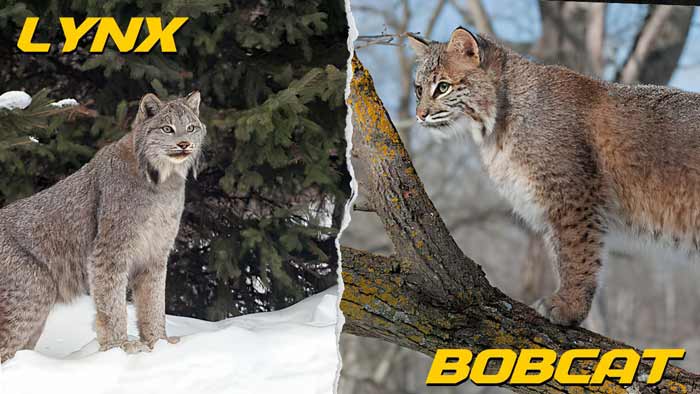
In a hypothetical battle between a lynx and a bobcat, several factors would come into play. The lynx, with its larger size and strength, might have an advantage in a colder, snowy environment, leveraging its physical attributes.
However, the bobcat, known for its agility, adaptability, and territorial nature, could potentially outmaneuver the lynx, especially in more diverse terrains or in close combat situations.
Ultimately, the outcome would likely depend on the specific circumstances of their encounter, including the environment and the individual characteristics of the animals involved.
Conclusion
While lynx and bobcats share many similarities as members of the wild cat family, they are distinct species with unique adaptations to their environments.
Understanding the differences between these two fascinating animals not only enriches our knowledge of wildlife but also highlights the importance of preserving their habitats and ensuring their continued survival in the wild.
FAQs
The main differences include size (lynx are generally larger), fur (lynx have thicker, fluffier fur), ear tufts (lynx have longer tufts), and tail length (lynx have shorter tails).
You can distinguish them by looking at their size, ear tufts, tail, and fur pattern. Lynx are larger with more pronounced ear tufts and shorter tails, while bobcats are smaller with shorter ear tufts and slightly longer tails.
Lynx typically live in colder, snowy environments like the northern forests, while bobcats are more adaptable and can be found in a variety of habitats including forests, deserts, and suburban areas.
Yes, lynx are generally larger than bobcats, both in terms of body size and weight.
Bobcats tend to be more territorial and can be more aggressive, especially in areas close to human habitation. Lynx are typically more elusive and less aggressive.
Both lynx and bobcats are solitary animals. Lynx are known for their elusive nature, while bobcats are more adaptable and can be territorial.



